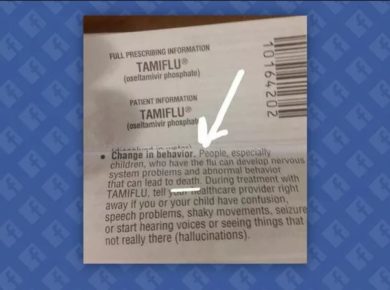I have been interested in vaccines/Injections causing Food Allergies, Asthma, Type I Diabetes, and other Autoimmune Disorders.
Charles Richet discovered more than a hundred years ago that injecting proteins into mammals will cause the development of allergies to those proteins. Subsequent exposure to those proteins will cause an allergic reaction that he termed: anaphylaxis.
He was awarded the Nobel Prize for this work.
Let’s call it the Richet allergy model.
The US Dept. of Health and Human Services (HHS) charged the Institute of Medicine (IOM) with providing a thorough review of the current medical and scientific evidence on vaccines and vaccine adverse events.
The IOM has concluded in its 2011 report, using medical terminology, that:
FOOD PROTEINS PRESENT IN VACCINES CAUSE THE DEVELOPMENT OF FOOD ALLERGIES.
Look at this report:
“Antigens in the vaccines that the committee is charged with reviewing do not typically elicit an immediate hypersensitivity reaction (e.g., hepatitis B surface antigen, toxoids, gelatin, ovalbumin, casamino acids).
The above-mentioned antigens do occasionally induce IgE-mediated sensitization in some individuals and subsequent hypersensitivity reactions, including anaphylaxis.”
In normal life, proteins we consume orally are digested and converted into amino acids before they are absorbed into the bloodstream.
The injection needle bypasses this process and allows the injection of proteins, exposing them directly to the blood. The immense consequences of this capability cannot be understated.
It is extremely important to understand and resolve these issues of vaccine/injection safety immediately before more people are injured.
This article shows that 100% of the adults vaccinated with an inactivated virus flu shot developed anti-influenza antibodies.
Smith-Norowitz TA, Wong D, Kusonruksa M, Norowitz KB, Joks R, Durkin HG, Bluth MH. Long Term Persistence of IgE Anti-Influenza Virus Antibodies in Pediatric and Adult Serum Post Vaccination with Influenza Virus Vaccine. Int J Med Sci 2011; 8(3):239-244. doi:10.7150/ijms.8.239. Available from http://www.medsci.org/v08p0239.htm
Immunoglobulin E or IgE is another name for these antibodies.
Inactivated virus vaccines basically contain viral proteins specific to that virus.
Developing antibodies or IgE specific to a protein is called sensitization or development of an allergy to that protein. So everyone who got a flu shot became allergic to those viruses.
When any other protein is injected, the body does the same thing. It treats the protein as a virus protein, develops an allergy, and attacks it when subsequently exposed to it.
Adjuvants are substances added to vaccines that increase the sensitivity of the immune system. The most common one is aluminum-based adjuvants.
When using an adjuvant, very little viral protein is needed to obtain an immune response. So a large number of vaccine doses can be made with very little viral protein when using adjuvants.
But by the same token, the immune system is also sensitized and responds to even small quantities of any other protein injected along with the vaccine, when adjuvants are used.
When food proteins are injected into the bloodstream, a type I hypersensitivity reaction against an allergen, encountered for the first time, causes a response in a type of immune cell called a TH2 lymphocyte, which belongs to a subset of T cells that produce a cytokine called interleukin-4 (IL-4).
These TH2 cells interact with other lymphocytes called B cells, whose role is the production of antibodies.
Coupled with signals provided by IL-4, this interaction stimulates the B cell to begin production of a large amount of a particular type of antibody known as IgE that are specific to the food proteins.
Secreted IgE circulates in the blood and binds to an IgE-specific receptor (a kind of Fc receptor called FcεRI) on the surface of other kinds of immune cells called mast cells and basophils, which are both involved in the acute inflammatory response.
The IgE-coated cells, at this stage, are sensitized to the allergen (food proteins).
Mast cells and basophils are found in large numbers in and around the mouth. These locations are prone to injury and thus need more protection against infection.
These mast cells and basophils are now IgE-coated and primed to react to the food proteins.
If the vaccinated person now eats these foods, the food proteins bind to the IgE molecules held on the surface of the mast cells or basophils in the mouth.
Cross-linking of the IgE and Fc receptors occurs when more than one IgE-receptor complex interacts with the same food allergenic molecule and activates the sensitized cell.
Activated mast cells and basophils undergo a process called degranulation, during which they release histamine and other inflammatory chemical mediators (cytokines, interleukins, leukotrienes, and prostaglandins) from their granules into the surrounding tissue causing several systemic effects, such as vasodilation, mucous secretion, nerve stimulation, and smooth muscle contraction.
This results in rhinorrhea, itchiness, dyspnea, and anaphylaxis.
Depending on the individual, the allergen, and the mode of introduction, the symptoms can be system-wide (classical anaphylaxis), or localized to particular body systems; asthma is localized to the respiratory system, and eczema is localized to the dermis.
In other words, an allergic reaction occurs to the foods that contain the food proteins which were present in the vaccine.
Red seaweed is a food source for shellfish. Vaccines can induce an allergy to red seaweed proteins. Consuming shellfish (or any seafood that is contaminated with red seaweed proteins) will result in an allergic reaction.
The same mechanism holds for any other protein that is injected into the body.
How are food proteins exposed to the bloodstream?
Vaccines, injections, tick bites and poor digestion due to acid-reducing medications such as proton pump inhibitors (PPI) are ways that food proteins end up in the bloodstream.
When acidity in the stomach is reduced by acid-reducing medications, food proteins are not broken down. They travel to the intestine intact and get absorbed into the bloodstream.
Tick bites result in the injection of a protein called alpha-gal (which is present in red meat) into the bloodstream, which leads to meat sensitivity, a phenomenon that I have seen increasingly more.
Based on the CDC, food (plant and animal) proteins such as egg, milk (casein), yeast, gelatin, red seaweed (agar), vegetable oils ( as part of Polysorbate 80) are present in various vaccines.
Vitamin K1 injections also contain vegetable oil and/or animal fats.
Polysorbate 80 contains vegetable oil. Many vaccines contain Polysorbate 80.
Polysorbate 80 can also contain corn, maize, wheat, palm oil, coconut oil, tapioca, etc.
Vegetable oils are oils from plant sources and can include peanut oil, tree nut oil, sesame oil etc.
So allergies to peanuts, tree nuts, sesame, and other allergens listed above could be traced to such injections/vaccines.
In all cases, the food proteins, thus introduced into the bloodstream can result in developing allergies to those food items.
The gelatin in vaccines was proved to be the cause of gelatin allergy.
“Kuno-Sakai H, Kimura M. Removal of gelatin from live vaccines and DTaP-an ultimate solution for vaccine-related gelatin allergy.Biologicals 2003;31:245-9. “
Egg in the flu vaccine caused the development of egg allergy.
“Serological examination of IgE- and IgG-specific antibodies
to egg
protein during influenza virus immunization “ BY
N. YAMANE AND H. UEMURA
In the laboratory, scientists induce food allergy in mice by injecting them with food proteins along with alum as an adjuvant. The same way vaccines inject food proteins along with adjuvants into humans.
Example of inducing food allergy in mice:
“Birmingham N., Thanesvorakul S., Gangur V. Relative immunogenicity of commonly allergenic food versus rarely allergenic and non-allergenic foods in mice. J. Food Prot. 2002;65:1988–1991.”
So we have seen various methods by which food proteins can be injected into the body, whether in mice or humans, and the result is the same: development of food allergy.
A typical flu shot contains 15 mcg of hemagglutinin (HA) protein per virus type and 0.5 mcg of ovalbumin protein.
About 60% of US children who receive a flu shot get sensitized to the HA protein. The result is the immune system attacks HA proteins on subsequent exposure giving protection against the flu virus.
One can expect 60/(15/0.5)=2% of those who receive the flu shot to get sensitized to the ovalbumin protein. The result is the immune system attacks the ovalbumin protein on subsequent exposure, giving egg allergy.
Indeed the estimated prevalence of egg allergy in children in the US is ~2% of the population!
http://www.fda.gov/downloads/BiologicsBloodVaccines/Vaccines/ApprovedProducts/UCM371815.pdf
http://www.cdc.gov/flu/about/season/effectivenessqa-2013-14.htm
http://www.foodallergy.org/document.doc?id=194
There are two mechanisms by which vaccines/injections can cause asthma.
Polysorbate 80 is used in the laboratory to cause lung injury in sheep for research.
Many vaccines contain Polysorbate 80 and can be causing lung injury in humans resulting in asthma.
We saw in the previous section that injected proteins result in the development of allergy to those proteins. What if the injected protein resembles a protein that is part of our body?
The immune system can be sensitized to the protein and begins attacking parts of our own body: an autoimmune disorder results.
Many vaccines contain human WI-38 human diploid lung fibroblasts or human embryonic lung cultures. If the immune system is sensitized to proteins in such lung tissue, it begins attacking our lung tissue. The result could be asthma.
This study shows that unvaccinated children had zero occurrences of asthma compared to 1.8-4.6% for vaccinated children.
“Vaccination Status and Health in Children and Adolescents”
This study states:
Childhood Vaccinations and Risk of Asthma
“The strongest evidence in support of a possible association between vaccination and asthma comes from a prospective study of a cohort of children born in 1977 in Christchurch, New Zealand. In that study, there was no evidence of asthma after 5 to 10 years of follow-up among 23 children who received neither pertussis nor oral polio vaccine, whereas asthma developed in >20% of 1184 children who had been vaccinated.”
One of the HiB vaccines approved by the FDA contains Modified Mueller Miller medium. The other two HiB vaccines do not.
http://www.cdc.gov/vaccines/pubs/pinkbook/downloads/appendices/B/excipient-table-2.pdf
Modified Mueller Miller medium contains pancreatic digest.
Based on the Richet allergy model, one would predict that the pancreatic digest in the HiB vaccine could cause autoimmunity to the pancreas, thus attacking pancreatic cells resulting in the autoimmune disorder: Type I diabetes.
Any intramuscular vaccine/injection needle will tear off muscle tissue and deposit it along with the vaccine contents. One muscle protein is tropomyosin. Tropomyosin is found in the brain and intestines also.
A person can develop sensitization to this tropomyosin protein, resulting in the immune system attacking the body’s tissues that contain tropomyosin.
In other words, an autoimmune disorder results. When the immune system attacks the intestines, the result is ulcerative colitis. Likewise, autoimmune brain disorders are also possible.
“Das, KM; Dasgupta, A; Mandal, A; Geng, X (1993). “Autoimmunity to cytoskeletal protein tropomyosin. A clue to the pathogenetic mechanism for ulcerative colitis”. J Immunol 150 (6): 2487–2493. PMID 8450225.”
The study below shows 100% of those who received the flu shot developed an allergy to the virus (anti-influenza IgE).
“Smith-Norowitz TA, Wong D, Kusonruksa M, Norowitz KB, Joks R, Durkin HG, Bluth MH. Long Term Persistence of IgE Anti-Influenza Virus Antibodies in Pediatric and Adult Serum Post Vaccination with Influenza Virus Vaccine. Int J Med Sci 2011; 8(3):239-244. doi:10.7150/ijms.8.239.”
So with 20 mcg of tropomyosin injected, everyone who receives an intramuscular shot can expect to develop an allergy to tropomyosin.
Since muscles are soft, the needle probably does not bore a clean hole. A lot of the muscle probably gets squeezed out of the way.
If not for this detail, perhaps a lot more of us will probably be dealing with autoimmune disorders associated with tropomyosin.
Due to cross-reaction, allergy to tropomyosin can also result in allergy to certain seafood that contains tropomyosin.
Like the above, intradermal and intramuscular injections/vaccines tear off skin tissues and deposit them with the injection/vaccine contents.
The result is the patient develops sensitization to skin proteins. The immune system attacks skin tissue that contains skin proteins resulting in autoimmune skin disorders such as eczema.
In clinical trials before a vaccine is approved, the FDA and the manufacturers look for “Solicited Adverse Events” which include local injection site reactions (pain, redness, and swelling) and general adverse events, (fatigue, fever, gastrointestinal symptoms, headache, arthralgia, myalgia, and urticaria) within 7 days after vaccination.
The immune system takes a few weeks to develop an immune response and provide protection against viral/bacterial proteins. The FDA and CDC will advise you to take the flu shots early to provide time for this process.
For the exact same reason, the development of allergies to the injected undesirable proteins will also take a few weeks.
The FDA and the manufacturers are not looking for allergy and autoimmune disorders (not part of the “solicited adverse events”). The FDA and the manufacturers are also not waiting long enough to check for these adverse events.
If the FDA and the manufacturers neither wait long enough for the adverse events to develop nor check for such adverse events at all, they are not going to find them. So the vaccines get approved.
Administer only one vaccine or injection at a time. Wait a few weeks before the next one. Vaccines/injections have multiple food proteins and multiple adjuvants. Adjuvants improve the efficacy of the immune response.
However, they can also increase the probability of developing allergies to the food proteins in the vaccine.
Today, kids get five shots in one sitting. Multiple food proteins and adjuvants being simultaneously administered can significantly increase the probability of developing food allergies.
God bless y’all 😊
Dr. Serge







[…] Vaccines cause allergies, asthma, diabetes and autoimmune disorders. […]